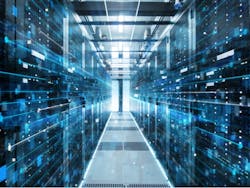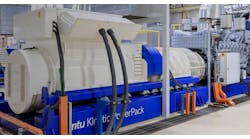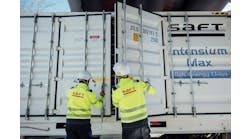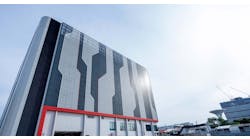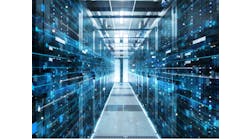Connecticut has supercharged development of a 20-MW fuel cell microgrid — part of a $1 billion data center project in New Britain — with a 10-year, $55.2 million sales and use tax exemption.
EIP Investments intends to build a microgrid spanning 45,000 square-feet on the site of a shuttered Stanley Black & Decker manufacturing plant in the project’s $100 million first phase of development. That would make it the largest indoor fuel-cell system in the world, according to EIP.
The US subsidiary of South Korea’s Doosan will provide the fuel cells for the data center.
“Doosan will supply 44 fuel cells to the site and perform all the scheduled maintenance for a period of 20 years,” Michael Coskun, Doosan Fuel Cell America’s general manager for sales and development, told Microgrid Knowledge. “Doosan will also support the developers installation team and engineering efforts.”
Building the largest indoor fuel-cell microgrid in the world
The microgrid will be grid connected and have the ability to run autonomously, in island mode, in the event of grid outages. Connecticut utilities Eversource and United Illuminating will purchase the electricity under power purchase agreements (PPAs) with EIP. Doosan anticipates delivering the first fuel cell units to the project site in the second half of 2020, Coskun said.
Connecticut’s Department of Energy and Environment (DEEP) approved the fuel cell project in July 2018. It’s expected to create more than 3,000 direct and indirect jobs over the course of the next 20 years, generate $45 million in tax revenues for New Britain and more than $200 million for the state. The state’s venture capital agency Connecticut Innovations recently granted the tax exemption.
Mark Wick, EIP partner, said the funding by Connecticut Innovations “will put us on par with 23 other states that are competing every day to attract national data center operators to their sites.” He added that it will apply only to the computing equipment after nearly $400 million is spent on the bricks and mortar. “This is the sign of a great public-private partnership, and we are very pleased.”
Doosan Fuel Cell America has been involved in the EIP data center microgrid project since 2016 when Coskun suggested that EIP might be able to obtain project financing by bidding into DEEP’s two, 20-MW clean energy requests for proposals (RFPs), Coskun said.
“The developer had wanted to build a data center for several years, and I suggested fuel cells as an alternative to the grid and traditional CHP (combined heat and power),” Coskun said. “[The RFP] allowed developers to build up to 20 MW of fuel cells and obtain a PPA from state of Connecticut’s two major utilities.”
Learn more about fuel cell microgrids. Check out this special report by Microgrid Knowledge.
Low-emissions fuel cells with potential 90% energy conversion efficiency
Doosan’s fuel cell systems provide electricity on a continuous basis for baseload and critical power needs, said Taiil Kim, head of sales and strategy at Doosan Fuel Cell America. Their heat recovery and cooling capabilities make them ideal for data centers in that they increase energy efficiency and reduce energy costs, one of a data center’s largest expenses. They’re also quiet and produce “ultra low CO2 (carbon dioxide) and NOx (nitrogen oxide) emissions,” he told Microgrid Knowledge.
The fuel cells will be supplied with natural gas via existing gas lines.
The energy conversion efficiency of Doosan’s fuel cells can reach as high as 90% when end users make use of the heat the fuel cells produce, according to Coskun. In addition, fuel-cell stack life is 10 years, the longest in the industry, “giving us an edge over other technologies that have to re-stack over three to six years. That lowers maintenance costs and downtime,” Coskun added.
Kim pointed out that Doosan has 50 years of stationary fuel cell experience. Its parent company, Seoul, South Korea-based Doosan Group, earns some $16 billion of annual revenue, employs 38,000 people and has a global presence. That provides customers with assurance that the company will be around throughout a project’s life cycle, Kim said.
“Doosan has been involved in powering data centers since 2013 starting with the First National Bank of Omaha and Verizon,” Coskun said. “Data centers are enormous baseload power users and will only continue to consume more.” Data centers consume 15% of all the power consumed in New Jersey, for example, he said.
“Data centers will continue to be an important vertical for Doosan to serve, and customers in the Northeast can take advantage of several incentives to reduce their overall costs adopting fuel cell technology,” he added.
Next phases for Connecticut data center
EIP intends to invest another $300 million in phase two of the project and carry out third and fourth phases to renovate and build the facility. The result would be the creation of two data centers in renovated buildings, each of which would require 44 MW, and an Innovation and Technology Center in a new building, according to the company. All told, EIP anticipates the project will cost $1 billion to complete.
Track news about fuel cell microgrid projects. Subscribe to the free Microgrid Knowledge newsletter.
